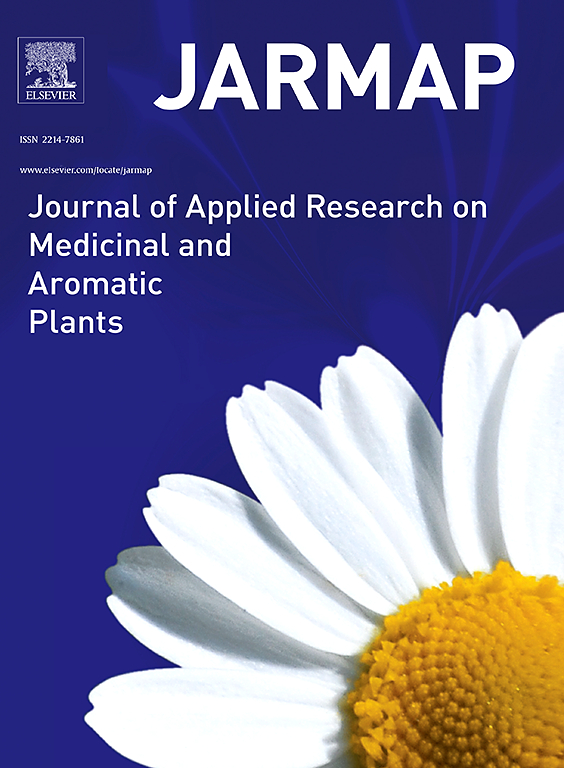Comparative analysis of three extraction methods for ginger leaf polysaccharide: Chemical composition, antioxidant activity, and hypolipidemic effects
IF 3.6
2区 农林科学
Q1 PLANT SCIENCES
Journal of Applied Research on Medicinal and Aromatic Plants
Pub Date : 2025-04-01
DOI:10.1016/j.jarmap.2025.100639
引用次数: 0
Abstract
Ginger leaves are often discarded in agriculture, exacerbating continuous cropping obstacles. Polysaccharide, due to their low toxicity and diverse bioactivities, have garnered considerable interest. To isolate ginger leaf polysaccharide (GLP), we compared three extraction methods: hot water extraction, ultrasonic-assisted hot water extraction, and ultrasonic-assisted aqueous two-phase system extraction. Response surface methodology optimization revealed ultrasonic-assisted hot water extraction as the most efficient method, achieving a yield of 9.31 % under a liquid-solid ratio of 30 mL/g and an ultrasonic power of 150 W at 65 ℃ for 22 min. Polysaccharide from different extraction methods showed difference in monosaccharide composition and molecular weight. The ginger leaf polysaccharide demonstrated strong antioxidant in vitro and hypolipidemic activities in Caenorhabditis elegans, and that from the ultrasonic-assisted hot water method showed the highest bioactivity. These findings highlight ultrasonic-assisted hot water extraction as the optimal method for efficient extraction of GLP and discover GLP’s potential for pharmaceutical and functional food applications.
姜叶多糖三种提取方法的化学成分、抗氧化活性和降血脂作用的比较分析
姜叶在农业中经常被丢弃,加剧了连作障碍。多糖由于其低毒性和多样化的生物活性而引起了人们的广泛关注。为了分离生姜叶多糖(GLP),比较了热水提取、超声辅助热水提取和超声辅助双水相萃取三种提取方法。响应面优化结果表明,在液固比为30 mL/g、超声功率为150 W、温度为65℃、萃取时间为22 min的条件下,超声辅助热水萃取法的提取率为9.31 %。不同提取方法提取的多糖单糖组成和分子量存在差异。生姜叶多糖对秀丽隐杆线虫具有较强的体外抗氧化和降血脂活性,其中超声辅助热水法提取的活性最高。这些发现强调了超声辅助热水提取法是高效提取GLP的最佳方法,并发现了GLP在制药和功能食品中的应用潜力。
本文章由计算机程序翻译,如有差异,请以英文原文为准。
求助全文
约1分钟内获得全文
求助全文
来源期刊

Journal of Applied Research on Medicinal and Aromatic Plants
Pharmacology, Toxicology and Pharmaceutics-Drug Discovery
CiteScore
6.40
自引率
7.70%
发文量
80
审稿时长
41 days
期刊介绍:
JARMAP is a peer reviewed and multidisciplinary communication platform, covering all aspects of the raw material supply chain of medicinal and aromatic plants. JARMAP aims to improve production of tailor made commodities by addressing the various requirements of manufacturers of herbal medicines, herbal teas, seasoning herbs, food and feed supplements and cosmetics. JARMAP covers research on genetic resources, breeding, wild-collection, domestication, propagation, cultivation, phytopathology and plant protection, mechanization, conservation, processing, quality assurance, analytics and economics. JARMAP publishes reviews, original research articles and short communications related to research.
 求助内容:
求助内容: 应助结果提醒方式:
应助结果提醒方式:


